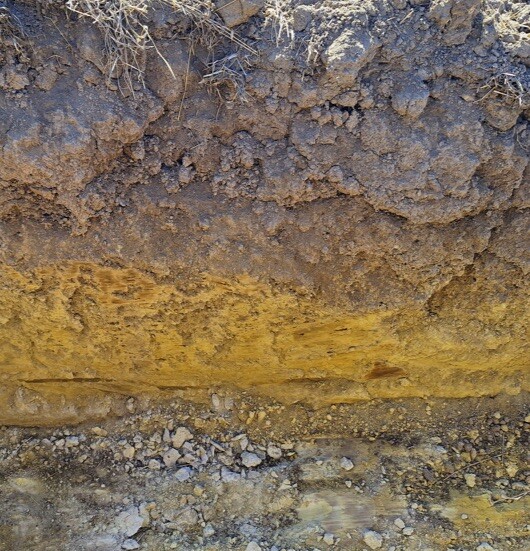How can we manage and improve soil carbon?
Organic carbon stocks in Australian soils have been identified as a critical area for improvement. This article discusses soil carbon and management practices for managing and improving soil carbon levels.

Key messages
- Including a pasture phase or legume in the rotation can improve soil organic matter and nitrogen levels, promote microbial activity and ultimately increase soil organic carbon
- Evaluating management practices to increase soil carbon is necessary to ensure they are economically viable
- Environmental factors such as rainfall, evaporation, solar radiation, and temperature, as well as soil type, nutrient availability and land management influence maximum soil organic carbon storage capacity
Organic carbon stocks in Australian soils are much lower than the global average and have been identified as a critical area for improvement in Australian agriculture.
With the Australian red meat sector aiming to be carbon neutral by 2030, is carbon neutrality becoming the new minimum standard? And how can we manage and improve our soil carbon levels?
What is soil carbon? A quick refresh
Soil carbon can occur in organic and inorganic forms.
Organic carbon is made up of decaying plant material, soil organisms and microbes, and carbon compounds such as sugars, starches, proteins, carbohydrates. Soil organic carbon makes up 58% of total soil organic matter and is measured through a laboratory test.
Inorganic carbon is mineral-based, most commonly as calcium carbonate. Environmental factors determine the balance of organic and inorganic carbon in the soil.
Soil organic carbon content is generally higher in cool, wet environments, whereas inorganic carbon is higher in semi-arid environments. Soil organic carbon is roughly three times larger than the amount of carbon stored in vegetation and double the amount stored in the atmosphere.
Increasing soil organic carbon
There is scope for increasing soil carbon in cropping and livestock systems across the Riverine Plains. Reducing grazing pressure on pastures and preventing soil degradation through erosion, salinity, soil acidity, or alkalinity plays a significant part in soil carbon management.
Management options that may increase soil organic carbon include:
- Stubble retention to reduce burning
- Replacing fallow with cover crops to reduce carbon losses during fallow
- Including pasture in the rotation - pastures generally return more organic carbon to soil than crops
- Addition of organic matter (i.e., manure from grazing animals)
Soil carbon is closely related to various biological, chemical, and physical soil processes. Therefore, soil organic carbon is a ‘headline’ indicator for detecting a change in soil condition. Regular testing from the same positions provides a means to track changes in carbon storage and an opportunity for trading excess carbon credits.
Note: Trading carbon credits can be risky as soil carbon levels can fall significantly during drought. Consider that your farming business may require those credits to maintain carbon-neutral certification.
Soil carbon projects by Riverine Plains
Riverine Plains carried out an extensive soil carbon project from 2012 to 2016. The project aimed to understand key drivers in managing carbon in farming systems.
Key findings from this project were that:
- Post-harvest fertiliser application does not have a measurable impact on soil organic carbon in the first year of application
- While a positive impact of post-harvest fertiliser may be seen 5-10 years after application, the monetary value of soil carbon would have to be significant to receive a return on investment
- There are benefits in continuing to focus on maintaining soil cover and soil organic matter, even if soil organic carbon levels do not increase
- Implementing practices that maintain high microbial activity is beneficial for physical, biological, and chemical soil properties
Riverine Plains was also involved in the Cool Soil Initiative from 2018 - 2023. The Cool Soil Initiative aimed to support grain farmers in reducing greenhouse gas emissions, leading to increased long-term sustainability and yield stability through adopting innovative agronomic strategies to improve soil health.
Learn more about greenhouse gas emission results from the project.
Resources & further reading
- Soil carbon | Environment, Land and Water | Queensland Government (www.qld.gov.au)
- Soil: Carbon dynamics | Australia State of the Environment Report
- State of the catchments 2010: Assessing the condition of soils in NSW - Technical report series
- Soil-Carbon-booklet_LR.pdf (riverineplains.org.au)
- Cool Soil Initiative - Riverine Plains
Author
NEWS
Keep up to date with the latest news from across the Riverine Plains.
-
Livestock
-
People
-
Grains
-
Sustainability

